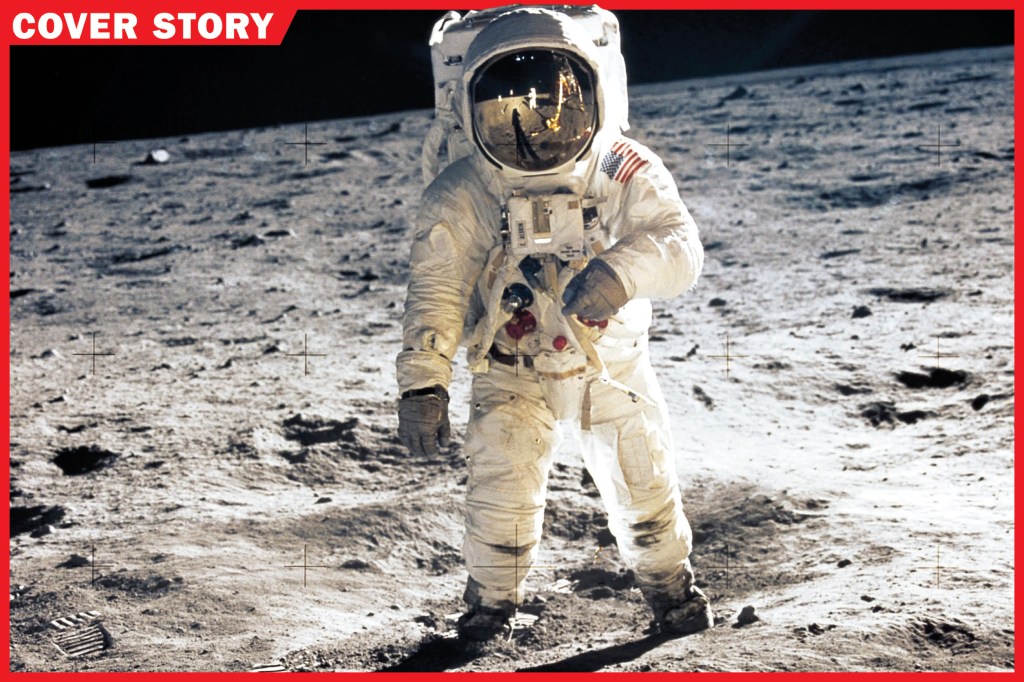
On July 20, 1969, more than 500 million people around the world watched a special event on live TV. They saw grainy black-and-white images beamed back from space. Then they heard the voice of American astronaut Neil Armstrong. He said, “That’s one small step for [a] man, one giant leap for mankind.”
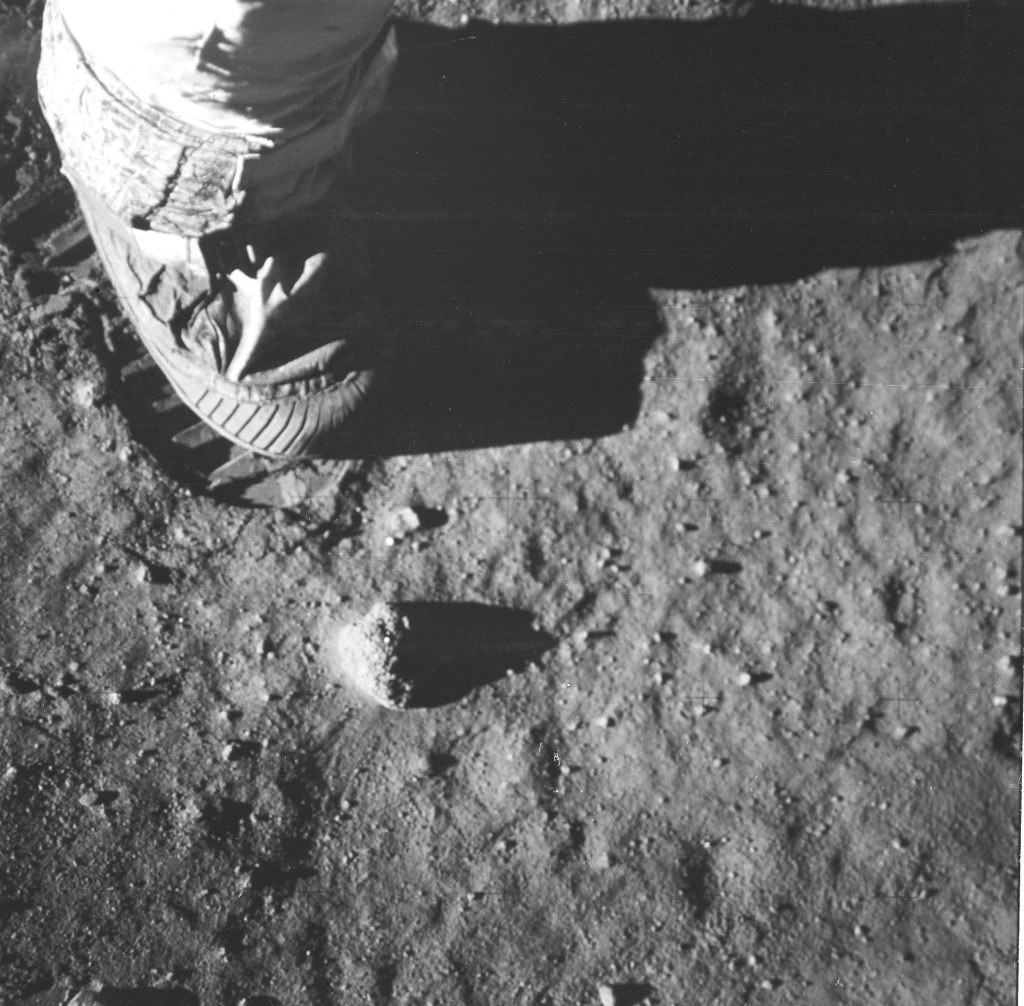
MOON WALK Buzz Aldrin’s boot makes an imprint on lunar soil.
NASAArmstrong had just become the first person to walk on the moon. His famous footsteps were the finale
finale
 PAUL A. SOUDERS/GETTY IMAGES
the end of something; the climax
(noun)
In the ballet's finale, the ballerina performs 32 turns on one foot.
of a fierce competition. In the 1950s and 1960s, the United States and the Soviet Union raced to achieve milestones
milestone
PAUL A. SOUDERS/GETTY IMAGES
the end of something; the climax
(noun)
In the ballet's finale, the ballerina performs 32 turns on one foot.
of a fierce competition. In the 1950s and 1960s, the United States and the Soviet Union raced to achieve milestones
milestone
 VCL/JUSTIN PUMFREY—GETTY IMAGES
an important event in the progress of something
(noun)
Learning how to crawl is a milestone in a baby's development.
in space exploration.
VCL/JUSTIN PUMFREY—GETTY IMAGES
an important event in the progress of something
(noun)
Learning how to crawl is a milestone in a baby's development.
in space exploration.
Eight years earlier, U.S. president John F. Kennedy challenged the nation to send a person to the moon. NASA accepted.
To the Moon!
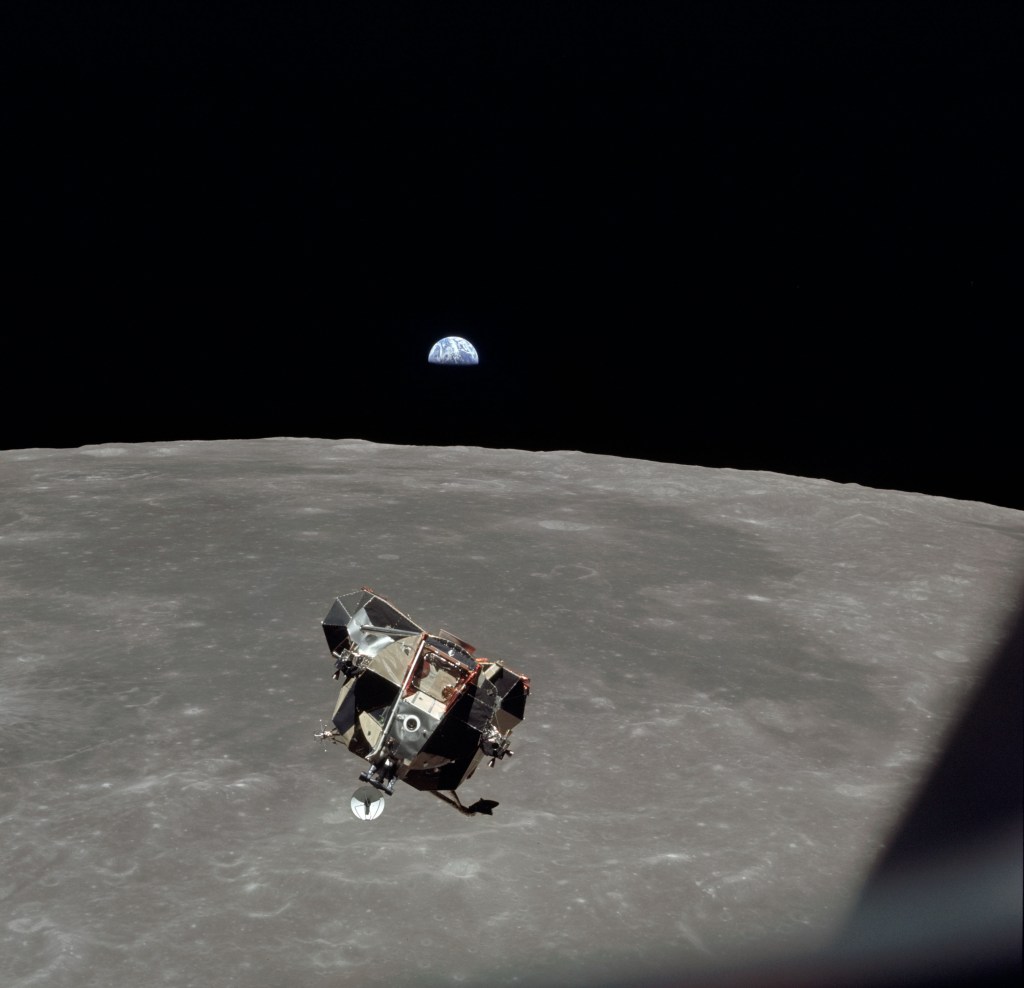
FAR FROM HOME Apollo 11’s lunar module, Eagle, returns from the moon’s surface.
NASANeil Armstrong, Buzz Aldrin, and Michael Collins formed the Apollo 11 crew. They were launched into space on July 16, 1969. As they neared the moon, the team split up. Collins was in Columbia. This was Apollo 11’s command module. Armstrong and Aldrin traveled in Eagle. This was the lunar
lunar
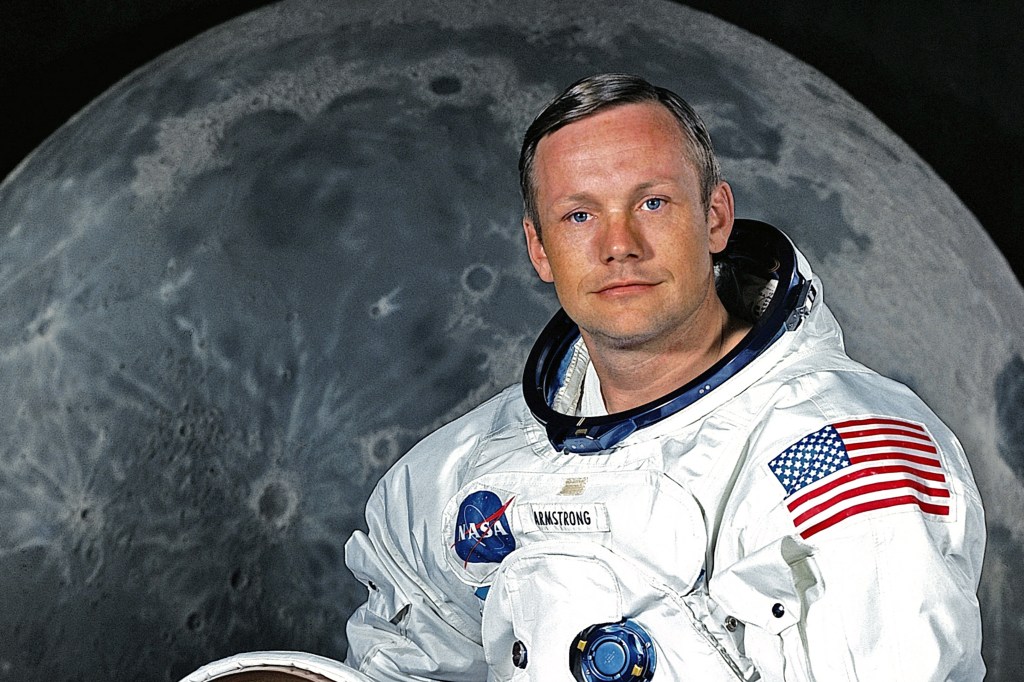 AP IMAGES
relating to the moon
(adjective)
Astronaut Neil Armstrong returned to Earth with lunar rocks and dust.
module. As Collins orbited, Armstrong steered Eagle to a fairly flat area that NASA had named the Sea of Tranquility. When they touched down, he notified Mission Control, in Houston, Texas: “The Eagle has landed.”
AP IMAGES
relating to the moon
(adjective)
Astronaut Neil Armstrong returned to Earth with lunar rocks and dust.
module. As Collins orbited, Armstrong steered Eagle to a fairly flat area that NASA had named the Sea of Tranquility. When they touched down, he notified Mission Control, in Houston, Texas: “The Eagle has landed.”
Armstrong and Aldrin spent 21 hours and 36 minutes on the moon. They set up science experiments and took rock and soil samples. They also planted an American flag in the powdery ground and left a plaque. It says, “We came in peace for all mankind.”
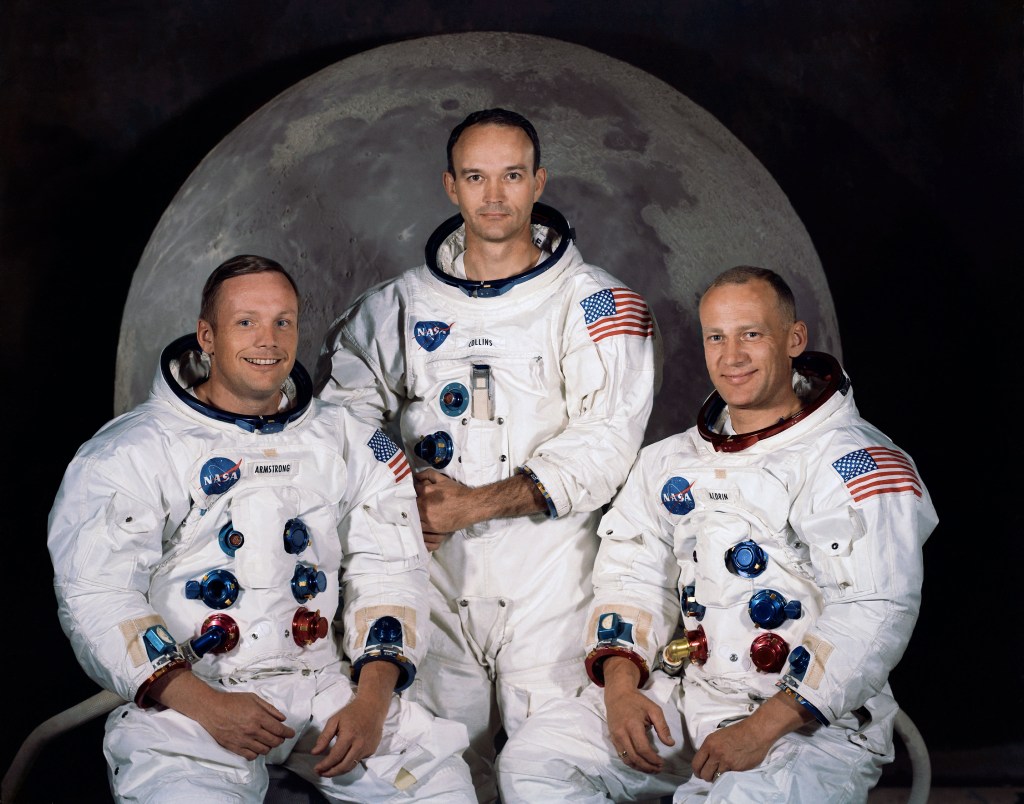
MOON MEN Neil Armstrong (left), Michael Collins (center), and Buzz Aldrin.
SSPL/Getty ImagesThe men returned to Earth on July 24, 1969, splashing down safely in the Pacific Ocean. The mission was a success.
Past, Present, and Future
Collins spoke to TIME for Kids about the historic mission. He described seeing Earth from a distance. “The Earth, from 230,000 miles, is a tiny, bright, shiny object,” he says. “As you look at it, you have this strong attraction to it. Because you know it is your home. Everything you’ve known all your life is right there in a tiny dot. You can blot it out with your thumbnail if you stick it out in front of you.”
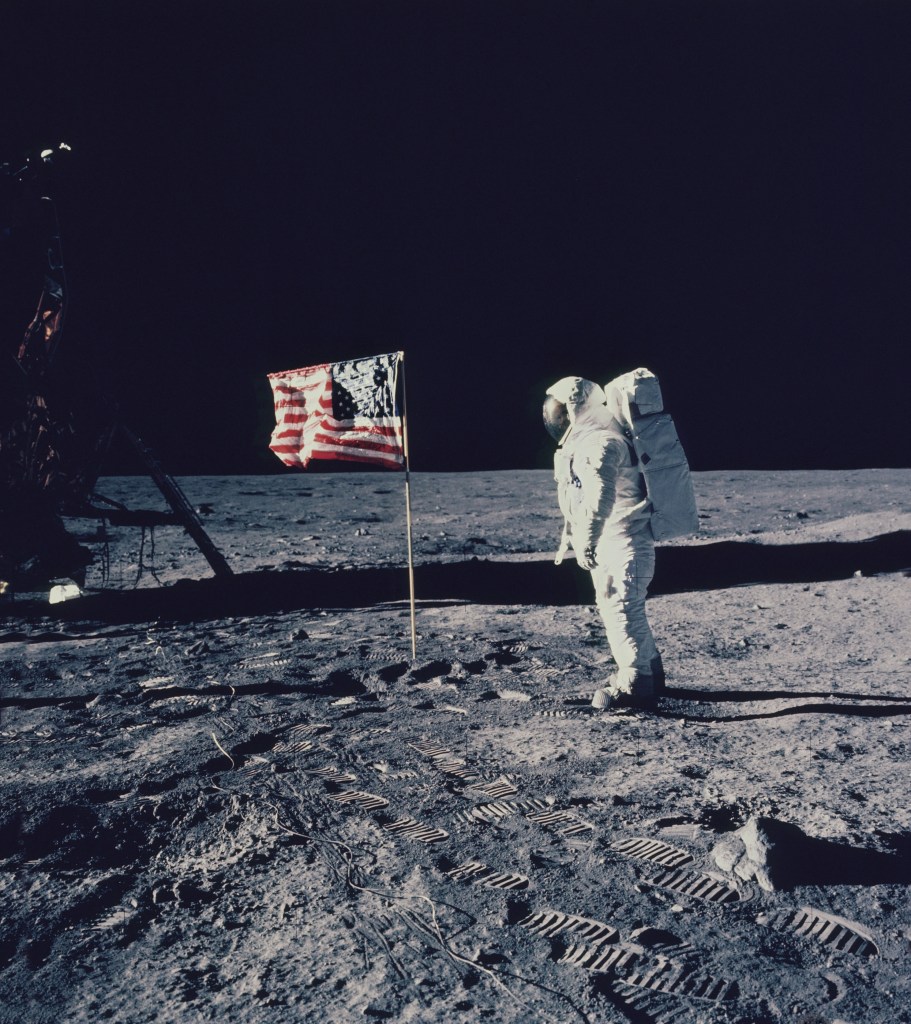
STARS AND STRIPES Buzz Aldrin stands on the moon near the American flag he and Neil Armstrong planted.
NASA/GETTY IMAGESU.S. astronauts last visited the moon in 1972. President Donald Trump has challenged NASA to send the next man—and first woman—there by 2024. The plan is to visit the moon’s south pole. The mission could help NASA send people to another faraway place: Mars.
Sidebar: Celebrating a Milestone
The Apollo astronauts returned to Earth as heroes. They went on a goodwill tour. It celebrated their achievement. And it showed that the U.S. would share its space knowledge. They traveled around the U.S. and to 24 countries. Below, they’re shown standing in a car in a parade in New York City.
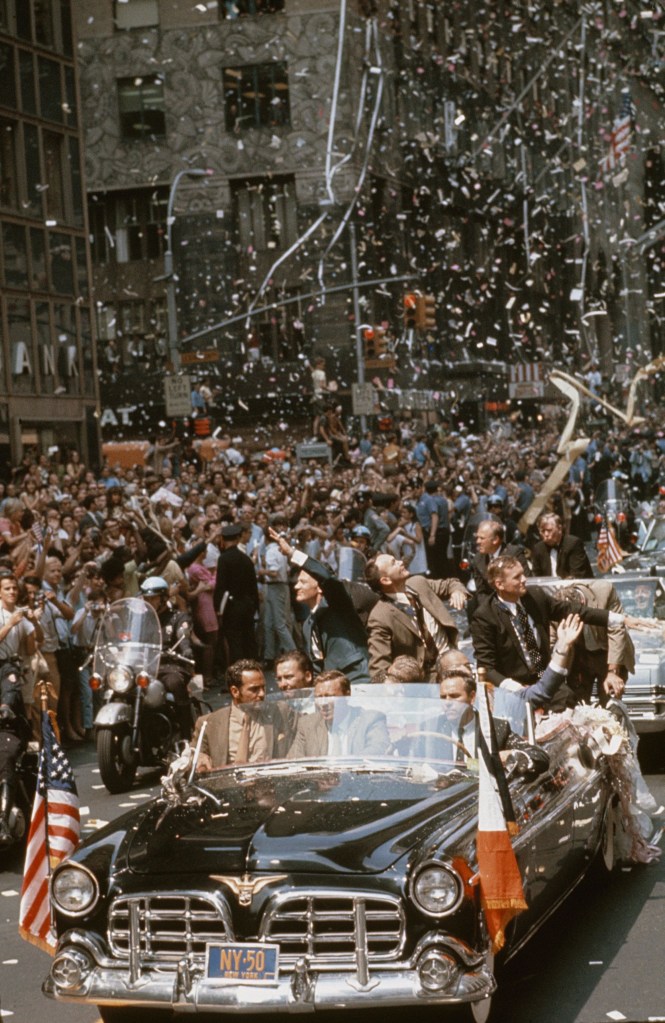
Celebrations continue this summer. July 2019 marks the mission’s 50th anniversary. Events are planned at museums and other locations across the country. The Kennedy Space Center, in Florida, expects a record number of visitors.













